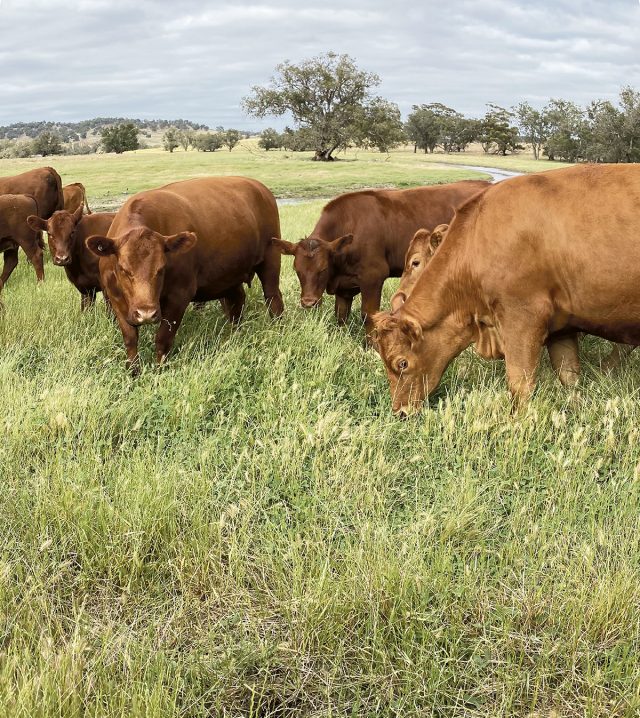You might have heard the term Regenerative Agriculture bandied about more often lately – it’s one of those once ‘alternative’ concepts that has been embraced by mainstream culture and woven its way into our vernacular. It’s now commonly accepted as the way forward for sustainable farming practices, and a good thing too! In a nutshell, it’s an approach to agriculture and land management which focusses on the health of the land itself, and it’s return to a natural and productive ecosystem post traditional broadacre farming.
Soil health and microbial activity is at the crux of regenerative land management with the understanding that healthy soil retains water, stores carbon and promotes biodiversity and natural ecosystems. It’s a no-brainer really – who wants food grown on unhealthy soil?
But interestingly that is what monoculture crops and intensive farming methods actually do. The repeated use of synthetic fertilisers, removal of top soil and soil nutrients and overgrazing kill the natural microbial activity of the soil in a disastrous chicken and egg situation which then requires constant addition of synthetic fertilisers and even more water to grow a successful crop or grazing feed for animals.
Charles Massey, whose book Call of the Reed Warbler is commonly regarded as the regenerative farming bible explains it like this;
‘Regenerative agriculture contests the industrial model in that it encompasses various types of farming that seek to enable natural systems and functions to not just be renewed but also to do the renewing: to allow self-organisation of natural systems back to healthy function.
Fortunately more and more farmers are embracing the new techniques and they are even using the terms to promote their produce, because why wouldn’t you choose a regeneratively grown pumpkin if you could? Everyone wants to feel like they are contributing to looking after the environment if they can.
Companies like Wide Open Agriculture, who promote products from farmers using regenerative techniques, are hedging their bets on consumer support in the future and playing on consumer conscience to choose food which has been grown on healthy soil and animals which have lived a more natural life.
But while the term Regenerative Agriculture is being used more and more as a way of identifying producers who care for land and promote healthy food production, so far it’s a much more loose term than organic or biodynamic, both of which require certification and are strictly managed by industry bodies.
So how do we define what regenerative farming really is?
Following one or more of the five regenerative farming principles is a good start, and in truth farmers introducing any of these techniques are doing a positive thing for their land, and ultimately the planet!
1) Reducing soil disturbance through no-till agricultural practices,
2) Keeping cover on the soil by growing cover crops or perennial grasses,
3) Keeping living roots in the soil as much as possible
4) Creating as much diversity as possible in the farm ecosystem, and
5) Integrating grazing animals back into the farm system.
Tom and Emma Mitchel, who run Worrolong Produce in West Gingin, are local horticulture farmers who have embraced regenerative techniques on their property, and have seen a positive effect on their production of pumpkins, limes and mandarins, and well as an increase of healthy microbial activity in their soil.
Tom, a geologist by trade and Emma, who studied Agricultural science, say they can’t really pinpoint the moment they decided to pursue biological or regenerative farming methodology, but a struggle to rid their pumpkin crop of root knot nematode got them thinking about soil biology and health.
“When we started out, we considered the soil was just there to hold the plants up and we kept it as bare as possible,” explains Emma.
Like many farmers, they sprayed chemicals to control weeds, pests and disease, and added synthetic fertilizers to increase yields in their crops.
In combating the nematode, Tom began learning about different ways to encourage plant health and eliminate pests by looking after the soil, which led him to discovering the benefits of biological farming.
“I don’t like spraying chemicals and I don’t know a farmer who does,” he says, “An important aspect of biological farming is the health and well being of the farmers themselves. I feel better about the way I farm now – its healthier for me and my family.”
Attending a sustainable farming course in Queensland gave him confidence he was heading down the right track. And of course he has read Charles’ revolutionary book. Charles’ message of ‘Healthy landscapes lead to healthy food, and therefore healthy people and a healthy planet.’ struck a chord with Tom, who devoured the book in a few days.
“While it’s not a manual for biological farming methods and focuses mainly on case studies of broadacre farming, the book explains how the regenerative farmer thinks,” says Tom, who, along with Emma, eagerly embraced the concepts; together changing the way they farm their land.
On a practical level they have introduced cover crops, reduced tillage and encouraged good bugs back into the soil by adding compost and natural fertilisers. They have noticed a steady increase in yield despite a dramatic reduction of synthetic fertilisers and spraying as well as an increased resilience in their crops.
Listening to the call of their pumpkins, as well as the millions of other living organisms that make up the ecosystem on their property has certainly worked for Tom and Emma, and they encourage other farmers to read the book, and discover for themselves the potential of Charles’ ideas.
Call of the Reed Warbler is a great place to start leaning more and its anecdotal style is easy to read. You can buy the book online or at the Northern Valleys Locavore Store in Bindoon.
There’s also plenty of resources on the web including the following:
https://groundswellag.com/principles-of-regenerative-agriculture/








